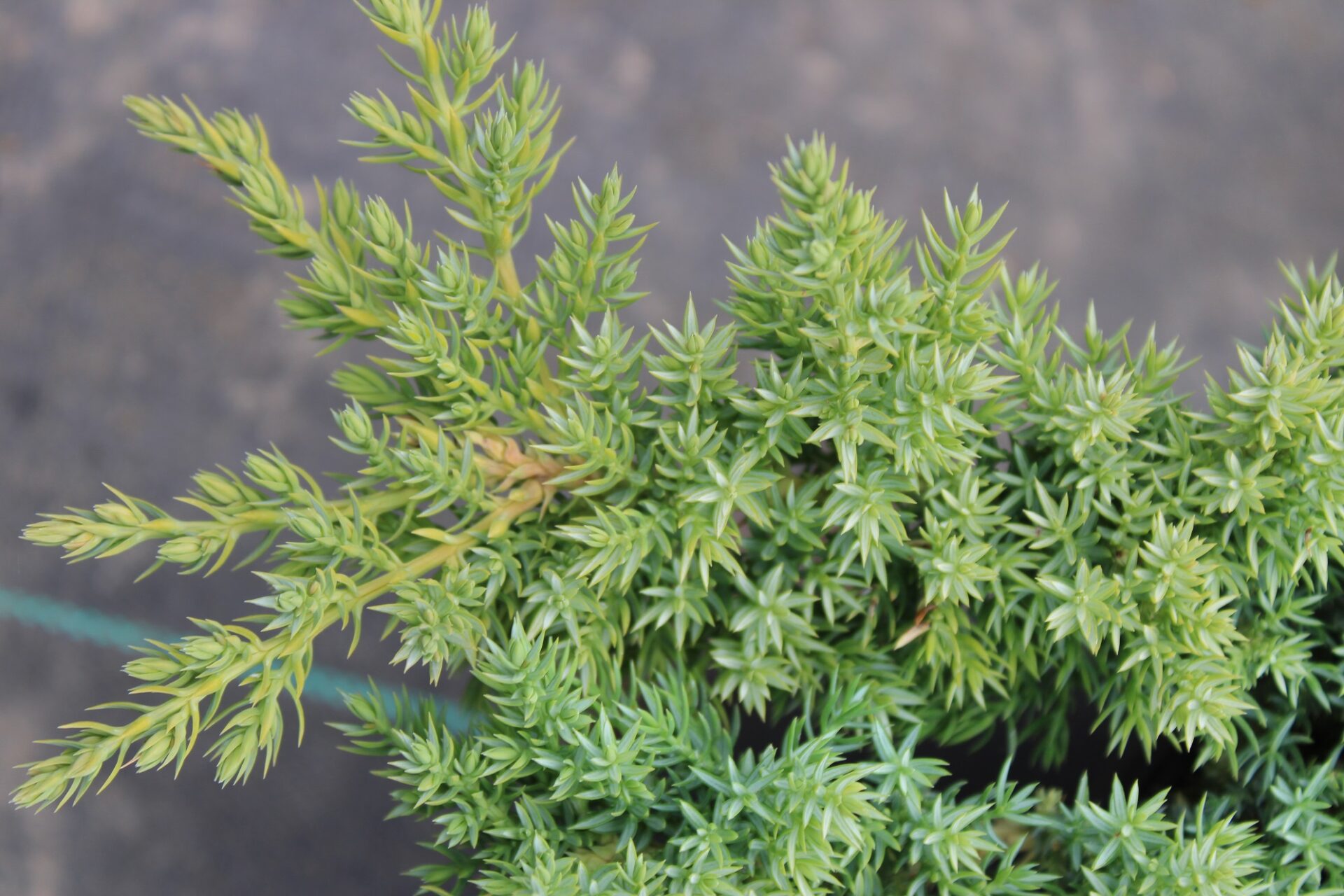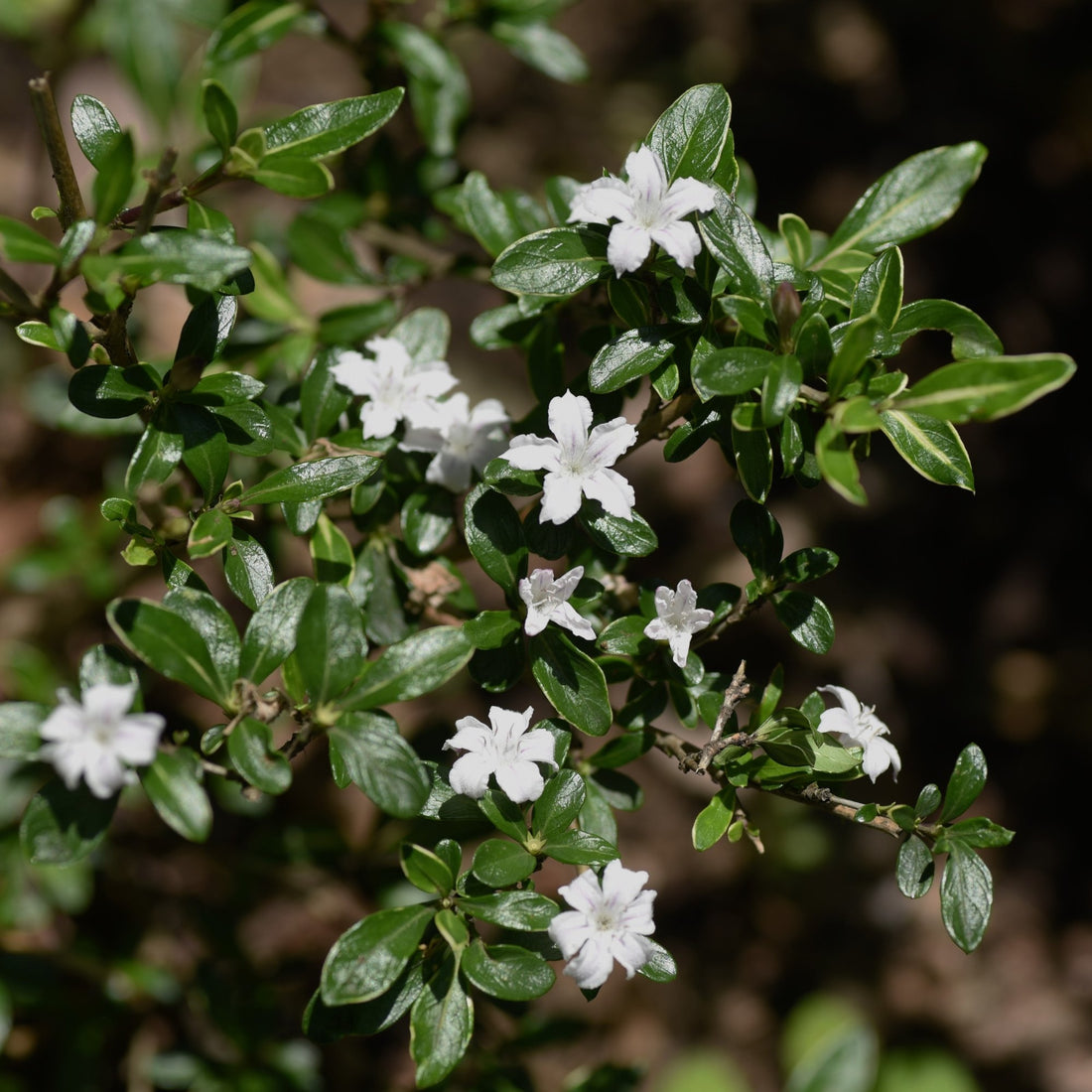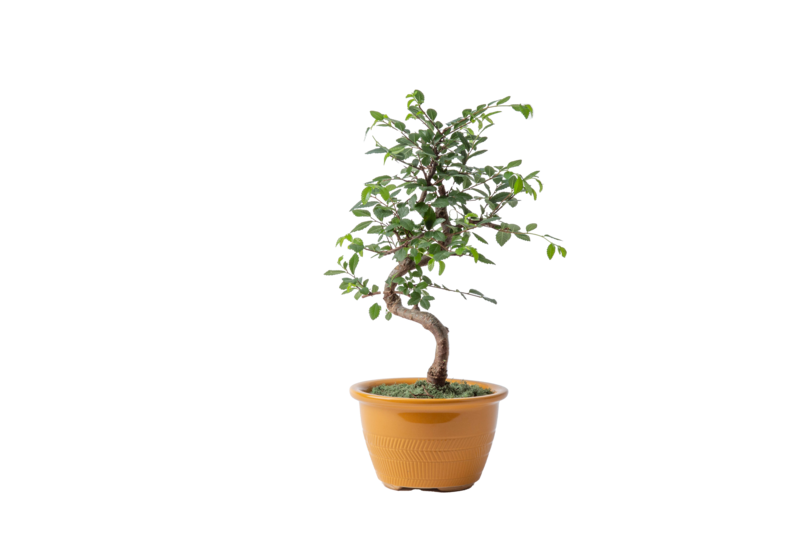Identify My Bonsai
Costa Farms offers a collection of bonsai trees. Here is how to tell which Costa Farms bonsai you have.

The bonsai in the photo is Carmona retusa which is commonly known as Fukien tea.
Carmona retusa, commonly known as Fukien tea, is a fantastic choice for bonsai enthusiasts due to its unique characteristics and aesthetic appeal. The tiny, dark green glossy leaves have a naturally compact growth habit, making them ideal for the miniature proportions of bonsai. The slightly textured surface of the leaves adds depth to the tree’s appearance. Unlike many bonsai species, Carmona retusa can bloom throughout the year, producing delicate white flowers. These flowers often give way to small, red or dark-colored berries, adding seasonal interest and a dynamic look. Over time, Fukien tea develops an aged, textured bark with an elegant, twisting growth habit. This makes it especially appealing for creating the illusion of an ancient, weathered tree in miniature form. Originally from Southeast Asia and China, Carmona retusa has long been associated with classical Chinese and Japanese bonsai traditions, adding a cultural and historical charm to any collection. Fukien tea works well in multiple bonsai styles, including informal upright, cascade, and broom, making it a versatile choice for both beginners and experienced bonsai artists.

Close up of leaves of Fukien tea

The bonsai in the photo is Ficus microcarpa commonly called Ficus Ginseng.
Ficus microcarpa, often called Chinese Banyan, Ficus Ginseng, or Indian Laurel Fig, is a popular and visually striking bonsai choice. One of the most distinctive features of Ficus microcarpa is its ability to develop aerial roots that grow from the branches and eventually reach the soil. This creates a dramatic, banyan-like appearance, adding a sense of age and grandeur to even small trees. Many cultivated bonsai specimens develop beautifully curved, smooth, light-gray trunks that enhance their aesthetic appeal. The glossy, oval-shaped leaves are naturally small and respond well to pruning, allowing for a lush canopy and refined branching. This compact leaf size makes it an excellent species for bonsai styling. Ficus microcarpa is extremely forgiving, thriving in a variety of conditions. Its ability to tolerate occasional overwatering, dry air, and low light makes it an ideal bonsai for beginners while still offering advanced styling potential for experienced growers. In many Asian cultures, the banyan tree is a symbol of wisdom, longevity, and prosperity. This adds a deeper meaning to Ficus microcarpa bonsai, making it a great choice for those who appreciate symbolic connections in their trees. Ficus microcarpa can be styled in a wide range of bonsai forms, including informal upright, root-over-rock, cascade, and banyan style (which highlights its aerial roots).

Close up of the leaves on a Ficus Ginseng
Caring for your bonsai

The bonsai in the photo is Juniperus procumbens 'Nana' and commonly called Dwarf Japanese Juniper.
Junipers are among the most iconic bonsai species, and Juniperus procumbens is no exception. Its naturally low-growing, creeping habit allows for a stunning windswept or cascading look, embodying the rugged beauty of trees shaped by nature over time. The small, needle-like foliage grows in compact clusters, making it easy to create well-defined pads and refinedwhat i branch structures. The rich green color adds to its visual appeal, especially when contrasted with its aged, textured bark. One of the most striking aspects of juniper bonsai is the ability to create jin (dead branches) and shari (stripped bark along the trunk), mimicking the natural weathering process seen in ancient trees. This gives Juniperus procumbens a rugged, timeworn appearance that is highly valued in bonsai art. The branches of Juniperus procumbens often develop beautiful, natural curves that enhance the bonsai’s aged and weathered look. With wiring, these natural twists can be accentuated to create dramatic movement in the design. This juniper is highly adaptable and tolerant of various conditions, making it a great choice for bonsai enthusiasts of all levels. It can withstand drought, responds well to pruning, and thrives outdoors with proper care. Junipers are deeply rooted in the history of Japanese bonsai, often seen in classic bonsai displays and exhibitions. Thanks to its naturally creeping growth habit, Juniperus procumbens is particularly well-suited for cascade (kengai) and semi-cascade (han-kengai) styles, where the tree appears to be clinging to the edge of a cliff. It also works beautifully in informal upright and windswept styles, emphasizing its natural elegance.

Close up of the needles of a Dwarf Japanese Juniper

The bonsai in the photo is Serissa fortida which is commonly called Snow Rose
Serissa foetida (also known as Serissa japonica, Snow Rose, or Tree of a Thousand Stars) is known for its delicate, white (or sometimes pink) flowers that resemble tiny stars. It can bloom multiple times a year, sometimes continuously, creating an elegant and refined look. The tiny, glossy green leaves give Serissa a well-proportioned, miniature-tree appearance, making it ideal for bonsai styling. The fine foliage also allows for dense, intricate branch structures, enhancing its visual appeal. As Serissa matures, it develops a textured, gnarled bark that gives it the appearance of an ancient tree in miniature. This rough bark, combined with its delicate flowers, creates a striking contrast that adds to its charm. Serissa responds well to pruning, making it easy to refine its shape and create intricate branching. With proper care, it can develop impressive ramification (In bonsai terms, ramification describes the process of branches splitting into smaller and smaller sub-branches, creating a dense, intricate network of twigs.), giving it a full, natural canopy. In bonsai traditions, Serissa is often associated with elegance, refinement, and patience—qualities reflected in both its delicate flowers and branching. Because of its naturally small leaves and fine branches, Serissa is an excellent candidate for shohin (small bonsai under 8 inches) and mame (tiny bonsai under 4 inches) styles. These miniature sizes further emphasize its delicate beauty.

Close up of leaves and blooms on Snow Rose

The bonsai in the photo is Zelkova bonsai commonly called Japanese elm.
Zelkova, particularly Zelkova serrata (Japanese Zelkova), is a highly prized bonsai species, often considered the quintessential tree for broom-style bonsai. Zelkova naturally develops a graceful, vase-like form with finely tapering branches, making it one of the best species for broom-style bonsai (Hokidachi). This style mimics the natural shape of mature Zelkova trees in the wild, giving it a highly realistic, tree-like appearance. The small, finely serrated leaves resemble those of an elm but have a more refined, elegant shape. In autumn, they turn brilliant shades of yellow, orange, or deep red, making Zelkova one of the most visually stunning deciduous bonsai species. Zelkova develops a smooth, gray bark that becomes slightly rougher with age. Over time, it forms a beautifully tapered trunk with a natural, stately look—one of the key traits that make it a favorite for bonsai. With proper pruning, Zelkova bonsai can develop extremely fine ramification, creating a dense, airy canopy that enhances its realism. This intricate branching makes it particularly desirable for advanced bonsai styling. Zelkova is a vigorous grower, making it relatively forgiving when pruned and shaped. It responds well to wiring and clip-and-grow techniques, making it an excellent choice for bonsai enthusiasts of all skill levels. Zelkova is a significant species in both Japanese and Chinese bonsai art, often associated with longevity, strength, and resilience. In Japan, it is a common street tree and a symbol of wisdom and endurance. While Zelkova is famous for its broom-style chuhin (medium-sized) and shohin (small) bonsai, it also works beautifully as a larger bonsai, where its powerful trunk and sweeping branches can be fully appreciated. With its refined leaves, graceful taper, and exceptional ramification, Zelkova serrata is one of the best species for capturing the natural beauty of a full-sized tree in miniature.

Close up of the leaves of a Japanese elm

The bonsai in the photo is Portulacaria
Portulacaria afra, commonly known as Dwarf Jade, Elephant Bush, or Spekboom, is a fantastic and unique bonsai species. Unlike traditional bonsai trees, Portulacaria afra has small, round, fleshy leaves and thick, water-storing stems. Portulacaria grows quickly and responds extremely well to pruning. It can be trained using the clip-and-grow method, developing fine ramification over time. Its rapid recovery from cuts makes it a forgiving species, ideal for beginners and experienced bonsai artists alike. With time, Portulacaria afra develops a thick, gnarled trunk with an aged, woody texture. The contrast between the old-looking bark and the fresh green leaves gives it a visually striking appearance. Unlike many traditional bonsai trees, Portulacaria is incredibly tough—it thrives in dry conditions and can handle a variety of light levels. It can even survive some neglect, making it an excellent choice for those who want a low-maintenance bonsai. In African cultures, Portulacaria afra is considered a symbol of prosperity and good fortune. Portulacaria afra works well in various bonsai styles, including informal upright, cascade, and broom styles. Its ability to produce aerial roots also makes it an interesting candidate for root-over-rock designs.
Close up photo of the leaves of Portulacaria afra
